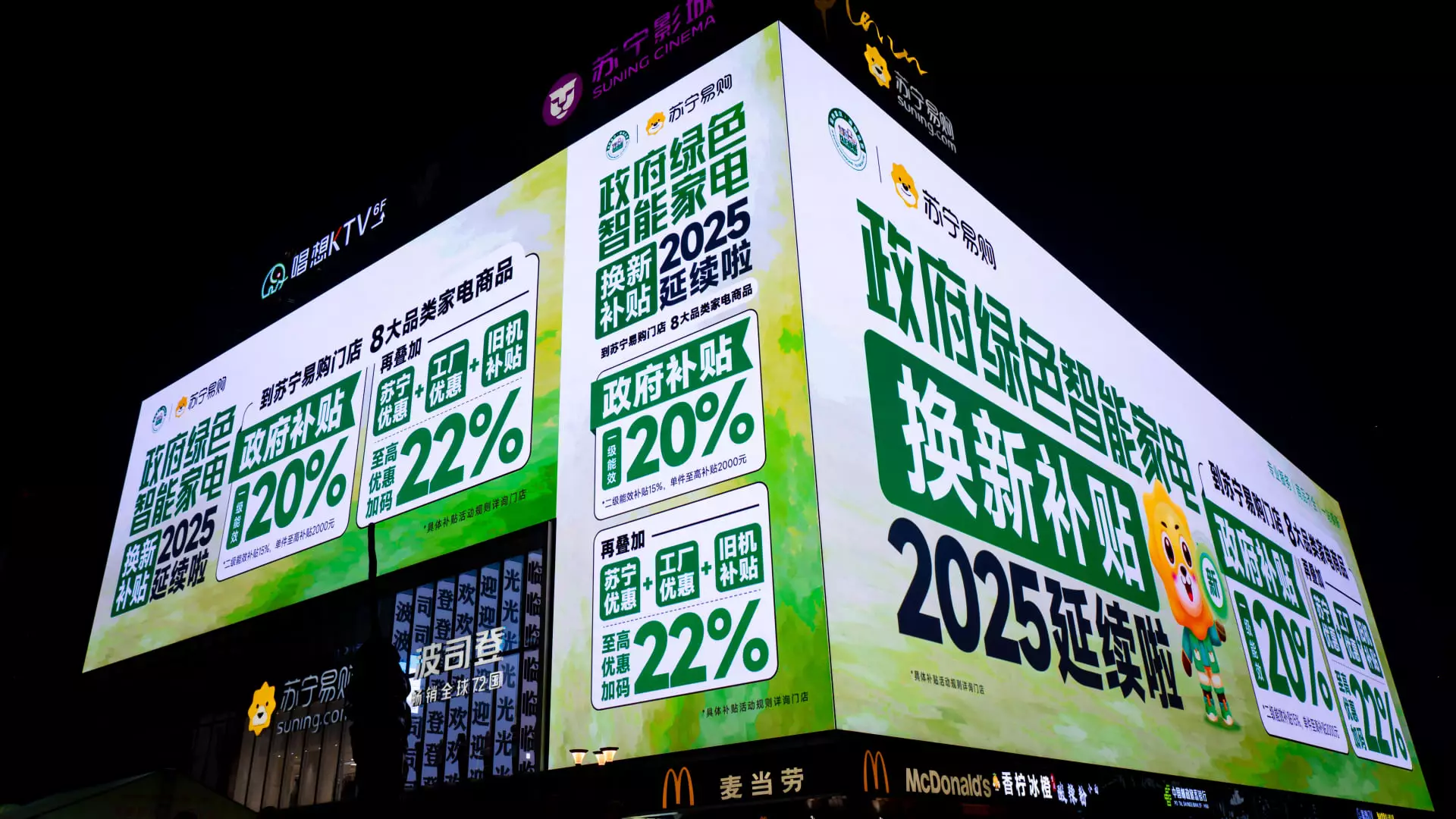As China enters 2025, its economic policy landscape is evolving, marked by a proactive approach to stimulate domestic consumer spending. Analysts view this as a pivotal move not only for the economy at large but also for specific sectors, particularly home appliances. Rather than implementing direct cash handouts to consumers, the government has opted for targeted incentives through a trade-in program for home appliances—an approach that aims to boost consumer activity and invigorate the economy.
The Chinese government has expanded its list of products eligible for subsidies, significantly impacting consumer behavior. The recent inclusion of essential household items such as microwaves, dishwashers, and rice cookers is a strategy designed to stimulate purchases in a diverse range of consumer electronics. By offering subsidies of up to 20% off retail prices, authorities aim to facilitate more substantial consumer engagement in the home appliance market. This policy builds on an earlier initiative that included eight specific categories, including air conditioners and washing machines, setting the stage for sustained demand in these sectors.
Morningstar analysts, particularly equity analysts like Jeff Zhang, have noted the potential windfall for leading home appliance manufacturers such as Midea, Gree, and Haier. With revised revenue forecasts for these companies projected to increase by a conservative 2% to 5% from 2025 through 2028, investment sentiment is robust. Zhang’s optimism is evident with his upward revisions on price targets for these stocks, suggesting an aggressive recovery trajectory following the recent stimulus announcements. Indeed, Midea’s shares reflected a remarkable surge of nearly 38% throughout the previous year, with analysts anticipating another potential rise of approximately 26% based on updated price targets.
Consumer Sentiment and Economic Challenges
Despite these bullish projections, the broader economic landscape remains fraught with challenges. While the subsidy program aims to kindle consumer enthusiasm, household spending continues to exhibit caution. Recent statistics indicating a 3.3% drop in home appliance prices suggest that consumer demand has remained tepid, largely attributed to lingering pandemic-related uncertainties. The forthcoming retail sales and GDP figures are keenly awaited, as they could shed light on the extent to which households are willing to embrace long-term economic optimism.
Subsidy Targeting and Funding Allocations
In an effort to further stimulate the market, Chinese officials have allocated a staggering 81 billion yuan (approximately $11.05 billion) to support the trade-in subsidies through the Spring Festival, underscoring the importance of consumer spending during this key period. Furthermore, it has been clarified that individuals who benefitted from the previous year’s subsidies will continue to enjoy similar benefits, amplifying their incentive to reinvest in new appliances and electrics. The specifics of the subsidy framework for the full year are expected to be unveiled at the annual parliamentary meeting in early March.
With the expansion of the subsidy program, notable e-commerce platforms are positioned to capitalize on this wave of consumer interest. JD.com emerges as a front-runner in leveraging the trade-in initiative, benefiting from its robust infrastructure, supply chain capabilities, and extensive experience in executing similar programs. Analysts from Citigroup emphasize JD.com’s strengthened position to capture the growing demand amid the stimulating policies.
Alibaba also finds itself in a favorable position, thanks to its immense reach through Tmall and Taobao, which serve both significant brand distributors and smaller merchants. The ongoing growth of these platforms reinforces consumer behavior trends and ensures they remain key players in responding to government stimulus measures. Despite the competitive landscape, PDD appears to have a less advantageous position relative to JD.com and Alibaba.
While China’s economic recovery strategy through targeted consumer stimulus is ambitious and well-defined, it operates within a fragile market context. The push for increased consumer spending via trade-in subsidies has the potential to revitalize certain sectors, particularly home appliances. However, stakeholders must also remain vigilant to external factors, such as price compression and the state of the real estate market, that could dampen growth prospects in the near term. As 2025 unfolds, it will be critical to monitor both consumer behavior and the broader economic indicators to assess the real impact of these stimulus initiatives.

